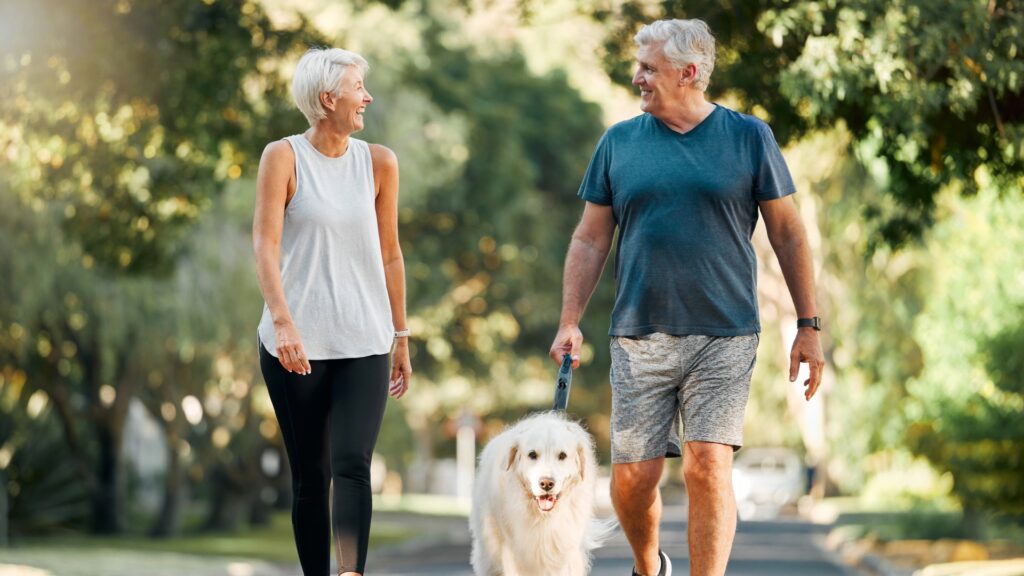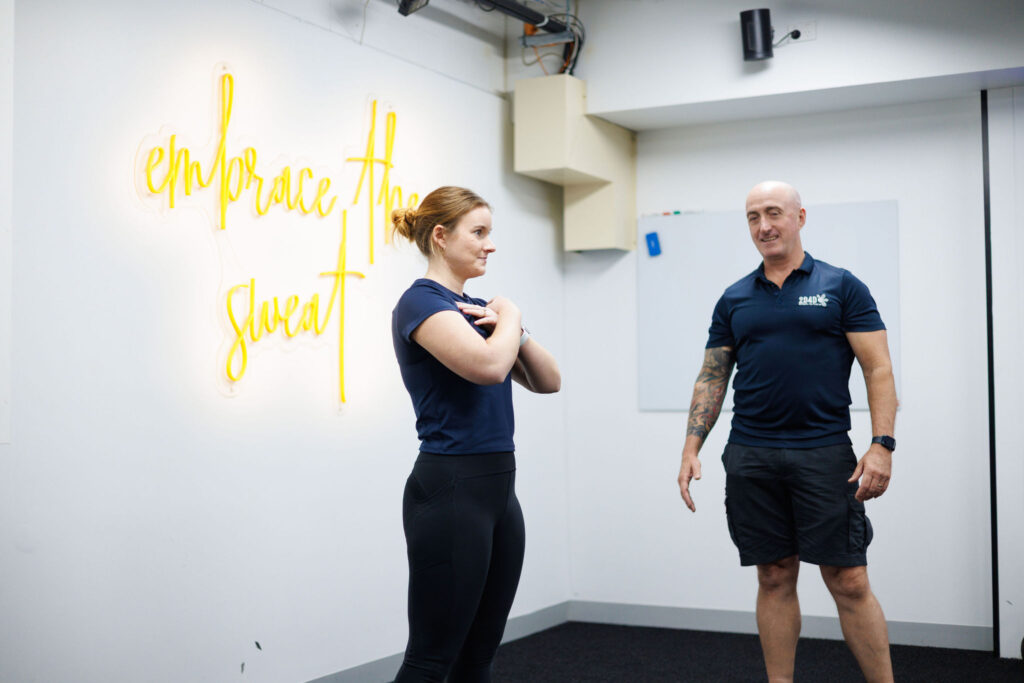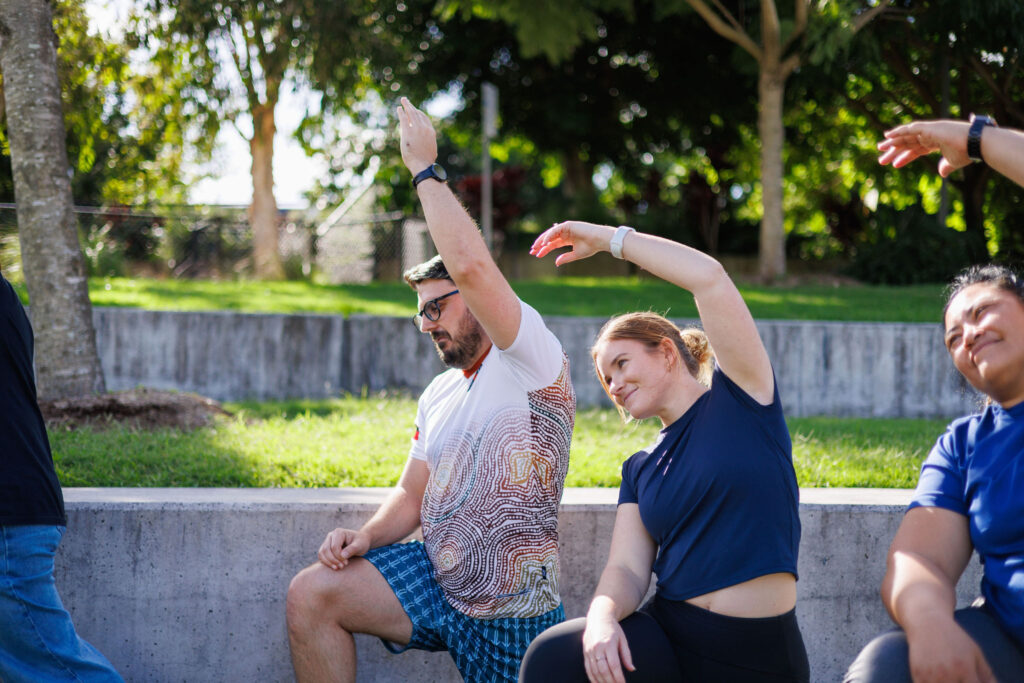Exercise for lung and kidney health
Our lungs and kidneys are essential organs – lungs bring in air and oxygen, while kidneys filter blood and remove waste. When they aren’t working well, you might feel breathless, tired or low in energy.
Prescribed exercise is one of the few medicines that can help improve function, reduce symptoms and break the cycle of inactivity, de-conditioning and worsening illness. In lung conditions, physical activity can reduce breathlessness, fatigue and hospital admissions.
Home / Lung and kidney health

How exercise improves lung and kidney function
People with chronic lung conditions often avoid activity because of breathlessness and fatigue. This can lead to muscle weakness, worse breathlessness and further inactivity, creating a ‘vicious cycle’. Exercise helps break that cycle by improving fitness, muscle strength, and breathing efficiency.
Regular aerobic activity (walking, cycling) combined with resistance exercises helps improve breathing, clear mucus, reduce breathlessness during daily tasks, and enhance overall independence.
After organ transplantation, including kidney transplant, exercise promotes recovery, helps maintain healthy weight, reduces cardiovascular risk, and supports long-term graft function. However, it must be tailored to an individual’s needs and health.
Inspiratory muscle training (breathing through a resistance device) may help people with lung disease build respiratory muscle strength and reduce breathlessness, particularly when traditional exercise is difficult.
Common lung and kidney conditions helped by exercise

Lung conditions
Regular movement helps ease breathlessness, build stamina and maintain physical function. Find out more about safe breathing-focused exercises for your lung condition.
Kidney disease
Exercise supports energy, strength, blood pressure and fluid management at all stages of kidney disease.

Solid organ transplant
After a transplant, exercise helps rebuild strength, improve cardiovascular fitness and support long-term health. Find out more about exercising safely after a transplant.
Get started with exercise safely
Work with an exercise expert
If you have lung or kidney conditions, or have received a transplant, work with an Accredited Exercise Physiologist. They can help tailor a plan to your lung capacity, kidney treatment or transplant stage and monitor progress safely.
Keep it simple
Intermittent exercise at a low intensity is best often best to begin with. This could include simple exercises such as walking or cycling.
Use your breathlessness (or other symptoms) as a guide. If you feel too breathless, take a rest, and then recommence with the activity when you feel your symptoms have recovered.


Start gently and build gradually
The aim is to increase how long you can exercise for before needing to take a break.
Begin with short sessions, perhaps just 5 to 10 minutes, and gradually increase over time. This is especially important if you’re on dialysis, recovering from illness, or managing fatigue.
Monitor symptoms and adjust accordingly
Stop and seek advice if you experience dizziness, chest pain or discomfort, excessive breathlessness, swelling, cramps or unusual fatigue. Listen to how your body responds and allow rest when needed.
Stay flexible around treatment and energy levels
Plan your activity around dialysis sessions, transplant follow-ups or flare-ups in lung symptoms. Some days you may do more, and other days you may need to rest. Even gentle movement counts.
Frequently asked questions
What is an Accredited Exercise Physiologist (AEP)?
An Accredited Exercise Physiologist (AEP) is an allied health professional that prescribes individualised exercise therapy to help people manage their chronic conditions, disabilities, long-term injuries and so much more. They are the most qualified professionals in Australia when it comes to the prescription safe and effective of exercise therapy.
Is it safe to exercise if I have COPD or Asthma?
Yes. Regular, tailored exercise is safe and beneficial, but it’s important to pace activity and learn techniques like pacing and breathing control. Pulmonary rehabilitation programmes are especially helpful.
How much exercise should someone with kidney disease aim for?
Try to gradually build up to about 30 minutes of moderate activity on most days. However, shorter sessions (10–15 minutes) or less intense activity may be more appropriate at first.
Can exercise improve fatigue and mood in people on dialysis?
Yes. Exercise helps reduce fatigue, improve strength and muscle mass, and boost mood and quality of life in people with chronic kidney disease, including those on dialysis.
After a kidney transplant, are there exercises I should avoid?
Contact or collision sports may pose risks to the transplanted organ. It’s best to consult with your transplant medical team before returning to high-impact or contact activities.
What if I get too breathless while exercising with lung disease?
Breathlessness can be normal, but you should slow down or rest if it feels overwhelming, if dizziness occurs, or it doesn’t settle. Learning breathing techniques and pacing strategies can help manage exercise better.
You may also like
Check out additional Exercise Right factsheets and articles for practical, tailored tips on managing lung and kidney health through movement and exercise.

